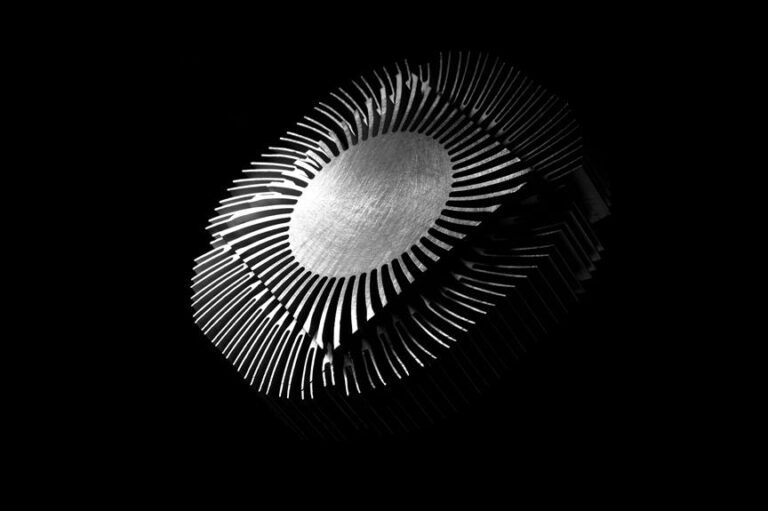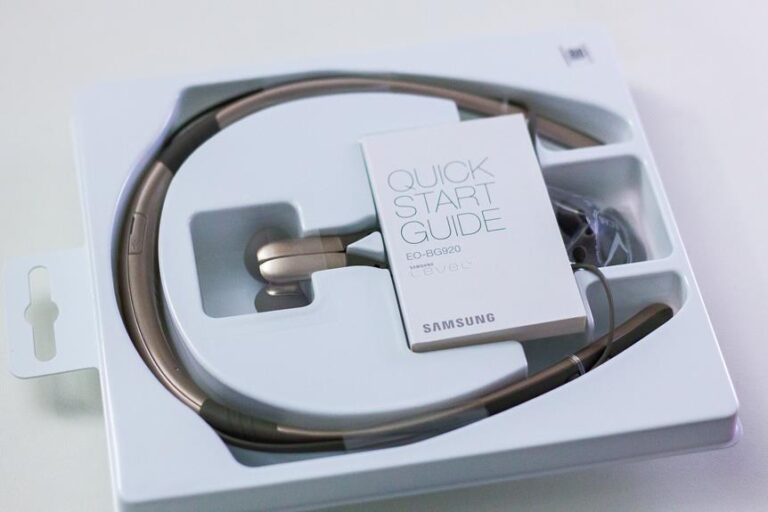Smooth Shifting: The Benefits of Transmission Shift Kits
Like a well-conducted orchestra, every component of a vehicle must perform in harmony for an optimal driving experience. Among these, the transmission shift kit plays a vital role, ensuring smooth gear changes and prolonging transmission lifespan. This article will delve into the technical details of shift kits, their types, installation process, and benefits, providing a comprehensive guide for those seeking to enhance their vehicle's performance and longevity. Unleash the potential of your ride with a transmission shift kit.
Key Takeaways
- Transmission shift kits improve gear changes by modifying shift timing and altering hydraulic flow.
- Shift kits enhance vehicle speed and overall performance by improving power transfer and increasing horsepower.
- Shift kit installation reduces wear and tear on the transmission, prolonging its lifespan and contributing to the longevity of the vehicle's transmission system.
- There are different types of transmission shift kits available, including manual shift kits that offer full control over gear selection and automatic shift kits that provide various benefits such as valve body kits and TCM upgrades.
Understanding the Basics: What Is a Transmission Shift Kit
A transmission shift kit, a vital component in many vehicles, essentially modifies the transmission's shift timing in order to dramatically improve the speed and efficiency of gear changes. This modification is a popular choice among car enthusiasts who are focused on drivetrain upgrades and transmission modifications to boost overall vehicle performance.
Transmission shift kits consist of a series of hardware components that, when installed, alter the hydraulic flow of transmission fluid. They aim to reduce delay and eliminate the sluggishness often experienced in automatic transmissions. By modifying the shift timing, shift kits can offer drivers a more connected and dynamic driving experience.
Additionally, these kits can contribute to the longevity of the transmission. By enabling faster gear changes, they reduce the unnecessary wear and tear on the transmission bands and clutches, thereby extending the life of the drivetrain components.
The Role of Transmission Shift Kits in Vehicle Performance
Transmission shift kits play a pivotal role in vehicle performance, particularly in enhancing vehicle speed. The installation of these kits can directly impact the rate at which gear changes occur, thus influencing acceleration and overall driving experience. In the subsequent discussion, we will explore in depth how these shift kits improve vehicle speed and the effects of their installation process.
Enhancing Vehicle Speed
With the installation of transmission shift kits, there is a notable enhancement in vehicle speed, underlining their pivotal role in overall vehicle performance.
- Enhancements through shift kits:
- Torque converter upgrade: By improving the fluid coupling, the torque converter upgrade provides a more efficient power transfer, thus improving speed and acceleration.
- Supercharger pulley upgrade: By increasing the rotational speed of the supercharger, this upgrade boosts the engine's air intake, resulting in a substantial increase in horsepower and, in turn, vehicle speed.
These upgrades, when combined, provide a significant boost to the vehicle's performance. The detailed analysis of each upgrade clearly highlights the liberation that transmission shift kits provide. In the following section, we will further explore the impact of shift kit installation.
Shift Kit Installation Impact
Delving into the impact of shift kit installation, it becomes evident how significantly these kits contribute to enhancing vehicle performance. A transmission shift kit modifies the transmission's shift timing, eliminating the delay between gear changes, thereby providing smoother, faster shifting. This not only enhances the driving experience but also reduces wear and tear on the transmission, prolonging its lifespan.
The kits also play a vital role in managing the hydraulic pressure that controls gear shifting. By fine-tuning this pressure, shift kits prevent the transmission from slipping between gears, a common problem that can lead to expensive repairs. Therefore, the beneficial impact of these kits extends beyond performance, delivering a substantial improvement in the overall health and longevity of the vehicle's transmission system.
Types of Transmission Shift Kits: An Overview
Transmission shift kits, pivotal components for enhancing vehicle performance, come in a variety of types to cater to different vehicle mechanisms. Primarily, these kits are divided into two types: Manual Shift Kits and Automatic Shift Kits, each with their unique specifications and functionalities. A comparative analysis of these types can provide an in-depth understanding of their respective advantages and potential applications in automotive engineering.
Manual Shift Kit Types
To understand the range and functionality of manual shift kits, we must first break down the different types available in the market.
- Full Manual Shift Kits: These kits require manual gear shifts, offering the driver full control over gear selection. They are ideal for performance-driven scenarios like racing, where precision and control are paramount. Sub-types include:
- *Competition shift kits*: Designed for high-performance racing applications.
- *Street/strip kits*: Provide a balance between everyday driving and racing needs.
- Semi-Manual Shift Kits: These kits combine automatic shifting with the ability to manually override the system. They offer a blend of convenience and control, suitable for individuals seeking a more involved driving experience without sacrificing comfort. Sub-types include:
- *Sport mode kits*: Allow for aggressive driving while maintaining automatic shifting.
- *Overdrive kits*: Enable manual control over overdrive engagement.
Automatic Shift Kit Varieties
In the realm of automatic transmission, shift kit varieties abound, each designed to enhance and refine the function of the vehicle's gear shifting mechanism. The most common types include valve body kits, performance shift kits, and transmission control module (TCM) upgrades.
Valve body kits improve hydraulic control by modifying the transmission's valve body, resulting in smoother and more efficient shifting. Performance shift kits, on the other hand, focus on the delivery of power, offering more aggressive shifting for high-performance driving. TCM upgrades deal with the electronic side of automatic transmissions, providing refined control over gear shifts. They're often customizable, allowing for personalized driving experiences.
Each variety has its unique benefits and is crafted to cater to different driving requirements and preferences, offering drivers the freedom to choose.
Comparing Shift Kit Types
While there are several types of transmission shift kits available, understanding the unique features and benefits of each can help you make an informed decision about which is best suited to your driving needs. The two main types of transmission shift kits are:
- Automatic Shift Kits: Designed to provide smoother gear shifts, these kits can help improve the longevity of your transmission. They are especially beneficial for vehicles that experience heavy loads or towing.
- *Performance Shift Kits*: These kits focus on enhancing the driving experience by improving acceleration and gear response time.
- *Heavy-Duty Shift Kits*: These kits are designed for vehicles used for towing or hauling. They help to manage the extra strain on the transmission.
- Manual Shift Kits: These kits provide a more engaging driving experience, allowing for greater control over gear shifts. They are ideal for performance-driven drivers.
- *Short Shift Kits*: These kits reduce the distance the gear lever needs to travel between shifts, speeding up the shifting process.
- *Sequential Shift Kits*: These kits allow for rapid shifting, ideal for racing and spirited driving.
Installation Process: How to Fit a Transmission Shift Kit
Several essential steps are involved when fitting a transmission shift kit, each requiring careful attention to ensure optimal performance. Initially, you must identify the correct kit for your vehicle's make, model, and transmission type. This crucial step ensures compatibility and peak performance.
After acquiring the right kit, the next step is to drain the transmission fluid safely. This process requires a specific drain pan and protective gear to prevent exposure to hazardous fluids. Next, you should remove the transmission pan, followed by the filter and valve body. It's important to exercise caution while handling these components to prevent damage.
The shift kit components are then installed into the valve body. Each kit comes with detailed instructions that need to be followed precisely. Once the new components are in place, the valve body, filter, and pan are reinstalled, and the transmission is refilled with fluid.
Ensuring each step is executed correctly will yield the desired performance improvement. This process, while technical, is a liberating experience for car enthusiasts who enjoy hands-on work. Now, let's transition into the subsequent section about 'the direct impact: how shift kits improve gear changes'.
The Direct Impact: How Shift Kits Improve Gear Changes
Through the enhancement of transmission fluid pressure, shift kits directly contribute to the swift and smooth operation of gear changes within vehicles. This optimized process cuts down on the delay between shifts, which in turn reduces wear and tear on the transmission.
Shift kits improve gear changes in two primary ways:
- Augmenting Transmission Fluid Pressure:
- Shift kits increase fluid pressure in the transmission system. This enhanced pressure promotes efficient gear shifts by reducing the time taken for the transition.
- The increased fluid pressure also aids in the swift engagement of clutches and bands, which directly results in seamless gear changes.
- Modifying Valve Body:
- Shift kits often include parts to modify the valve body of the transmission. This modification leads to better hydraulic control.
- With an improved hydraulic control, the transmission system can execute precise, swift gear shifts.
This direct impact of shift kits on gear changes not only improves the overall driving experience but also extends the life of your vehicle's transmission system. So, you can enjoy the liberation of smooth, swift drives without worrying about frequent or costly transmission repairs.
Long-Term Benefits: The Effect of Shift Kits on Transmission Lifespan
As we delve into the long-term benefits, you'll find that shift kits not only enhance the performance of your vehicle's transmission but also significantly extend its lifespan.
A shift kit modifies the transmission's shift timing, reducing unnecessary wear and tear. It does so by strengthening the flow of transmission fluid, improving heat dissipation and preventing overheating, a common cause of transmission failure.
Here is a detailed breakdown of how a shift kit contributes to each part of your transmission:
| Transmission Component | Benefit from Shift Kit |
|---|---|
| Clutch Packs | Reduces slippage, prolongs lifespan |
| Bands | Prevents early failure due to excessive heat |
| Valve Body | Strengthens fluid flow, reduces wear |
| Gears | Enhances smoothness, minimizes wearing |
| Torque Converter | Improves efficiency, reduces overheating |
Cost Analysis: The Financial Advantages of Installing a Shift Kit
The financial implications of installing a shift kit warrant thorough examination, as these modifications can yield substantial savings in long-term vehicle maintenance costs. A shift kit enhances the overall performance of your vehicle's transmission, reducing the likelihood of expensive repairs or the need for a complete transmission replacement.
To comprehend the potential savings, consider the following cost analysis:
- Initial Investment:
- Cost of Shift Kit: Shift kits are relatively affordable, usually ranging from $50 to $250, depending on the make and model of your vehicle.
- Installation Costs: If you're not mechanically inclined, professional installation can cost around $100-$300.
- Long-Term Savings:
- Reduced Repair Costs: Shift kits help prevent transmission damage, potentially saving you thousands in major repair costs.
- Increased Lifespan: The enhanced durability of the transmission can prolong the lifespan of your vehicle, delaying the purchase of a new one.
Therefore, while there's an upfront investment, the payoff of installing a shift kit is substantial. With the potential savings in reduced repairs and increased vehicle lifespan, it's clear that a shift kit is a financially savvy modification for those seeking long-term, cost-effective liberation from excessive vehicle maintenance costs.
Troubleshooting Tips: Dealing With Common Shift Kit Issues
While shift kits can significantly improve your vehicle's transmission performance, they may occasionally present certain issues that require adept troubleshooting. The common problems that arise typically revolve around the improper installation or adjustment of the kit.
Firstly, you may experience hard shifting if the shift kit is set too aggressively. This can result in a rough ride and potential damage to your transmission over time. To rectify this, adjust the settings on your kit to a less aggressive mode.
Secondly, the issue of delayed shifting might crop up if the kit is set too conservatively, leading to sluggish performance and increased wear on your transmission. The remedy lies in tuning the kit to a more balanced setting.
In scenarios where there are persistent problems even after adjustments, it could be due to poor quality or incorrect installation of the shift kit. In such cases, a professional inspection would be prudent.
Expert Insights: Professionals' Opinions on Transmission Shift Kits
In the realm of automotive expertise, professionals hold diverse opinions on the use and effectiveness of transmission shift kits. These kits are often advocated for their ability to improve the shift quality, reduce transmission wear, and enhance overall vehicle performance.
Automotive professionals categorize their views on transmission shift kits into two main perspectives:
- Supporters:
- Argue that shift kits can significantly extend the lifespan of a transmission.
- Believe that these kits provide a more engaging driving experience by allowing for firmer and quicker shifts.
- Critics:
- Contend that improper installation can lead to transmission damage, necessitating costly repairs.
- Maintain that factory settings are optimally designed for the average driver, and alterations may create unnecessary harshness during shifts.
For the supporters, shift kits are a tool of liberation, enabling the driver to have a more active role in their vehicle's performance and longevity. Detractors, however, caution that the benefits might not outweigh the potential risks if not installed and used correctly.
Frequently Asked Questions
What Are Some Common Mistakes to Avoid When Installing a Transmission Shift Kit?
Common mistakes during transmission shift kit installation include improper torquing, neglecting to clean the valve body, incorrect placement of gaskets, and failing to follow the specific instructions provided with the kit.
Are There Any Potential Risks or Disadvantages to Using a Transmission Shift Kit?
Yes, potential risks of using a transmission shift kit include increased wear and tear on the transmission, potential for improper installation, and possible voiding of the vehicle's warranty if not installed by a professional.
How Do I Know When It's Time to Replace My Transmission Shift Kit?
Identifying the need for a transmission shift kit replacement typically involves noticing symptoms such as rough shifting, slipping gears, or a delay in vehicle movement. A diagnostic test by a professional can confirm this necessity.
Can a Transmission Shift Kit Improve Fuel Efficiency?
Yes, a transmission shift kit can improve fuel efficiency. It optimizes gear shifting, reduces slippage, and enhances overall transmission performance, which collectively contributes to improved fuel economy in your vehicle.
Is a Transmission Shift Kit Necessary for All Types of Vehicles or Only Specific Models?
A transmission shift kit isn't universally necessary. Its utility depends largely on vehicle type and usage. High-performance or heavy-duty vehicles may see significantly enhanced operation, while standard vehicles may not require this upgrade.
Conclusion
In conclusion, installing a transmission shift kit offers a myriad of benefits, from enhancing vehicle performance to extending the lifespan of the transmission. Despite potential issues that may arise, the cost-effectiveness and overall improvement in gear changes make it a no-brainer for vehicle enthusiasts and experts alike. Ultimately, incorporating a shift kit proves to be a wise move in the long run, promising a smoother and more efficient driving experience.






